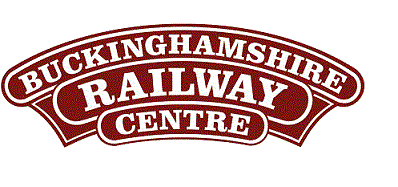
BRC Website Home
Quainton Virtual Stockbook - Miscellaneous Vehicles and Railway Plant
Permanent Way Trolley No. TP53P

BRC Website Home
Quainton Virtual Stockbook - Miscellaneous Vehicles and Railway Plant
Permanent Way Trolley No. TP53P

Photo: |
|
This vehicle was the first to arrive at Quainton Road after the Quainton Railway Society took the site over, it being delivered on 4 April 1969. It had worked its latter years on British Railways at Northampton, conveying men and materials to remote areas of the Region, and generally where there was no access to the track, being withdrawn in 1965. Its original works number is 8263 which shows it was one of a batch of nine trolleys ordered by the British Transport Commission on 24 November 1958, arriving at Manchester on 27th February 1959. It was built by D. Wickham Ltd. of Ware, Herts. The main rectangular frame of the trolley is robustly constructed from channel section steel, 7ft 9in long and 4ft wide, strengthened by two longitudinal members and two transverse members on which the engine and transmission are carried. The engine is the very successful 1323cc petrol driven JAP twin-vee, which is used in many applications in industry and has even been used in motor racing. The design has two air-cooler cylinders set in a 'V' pattern with dry sump lubrication. Lubrication is by scavenger pump and there is an oil reservoir tank which has a simple indicator. In operation it is very easy to maintain and will run happily with oil, petrol and just the minimum of maintenance. A Solex carburettor is used and there is magneto ignition. Electric starting is not a feature of the PW Trolley, the gangs presumably having plenty of beefy characters to wield a starting handle! The drive is interesting, the engine is fitted with a dished shaped flywheel which has a friction disc set at right angles to the flywheel. The friction disc is fitted on a layshaft with a variable sliding spine which allows the disc to move across the face of the flywheel; thus the disc and its shaft move faster as the disc is moved towards the periphery of the flywheel. The transmission is through a plate clutch to a shaft carrying a chain sprocket for the chain drive to one axle. The two axles of the trolley are carried on roller bearing axleboxes each supported by two coil springs mounted on the main frames. The flanged running wheels are of pressed steel construction and they are 16 inch diameter. Apart from the actual driving controls there is an ignition switch and a warning horn. Over the engine, transmission and petrol tank there is a longitudinal bench for the eight passengers and there are footboards on both sides. Underneath the bench there is also an enclosed toolbox. At the ends of the trolley are two sheet metal windscreens fitted with three fixed safety glass lights, and between these screens there is a wood framed canopy covered with canvas from which are hung waterproof side aprons, as draughty an arrangement as you could conceive! The brakes are operated by simple foot-pedals with linkage to hardwood brake blocks onto the four wheels, and for wet weather there was sand available from one sandbox to supply sand in front of the nearside driving wheel. The trolley has a matching non-powered truck with the same basic frame layout. The trolleys were kept on short pieces of track built at right angles to the operational line. When permission was obtained from the signalman or line possession obtained, the trolley was pushed by hand over the operating line and turned on a small turntable to face in the right direction. These trolleys are no longer used as they are too slow to get out of the way of modern high speed trains. They also cannot carry significant amounts of equipment, even when hauling two trailers. Trade union rules also conspired to hasten the trolleys' demise as the trolleys were required to be driven by a train driver and not a permanent way ganger. As the driver was not permitted to work on the track, the trolley was largely redundant during the work period. References: |
| Origin :- | British Rail | Date Built :- | 1959 | Number :- | TP53P |
| Type :- | Inspection Car | Builder :- | Wickham | Owner | QRS |
| Status :- | Static Exhibit | Location :- | Buffer Depot | Accession No.:- | TBC |
| Arrival Date :- | 4 April 1969 |
Text © Quainton Railway Society / Photographs © Quainton Railway Society or referenced photographer
Email Webmaster
Page Updated: 28 September 2017